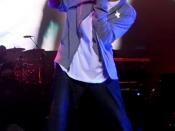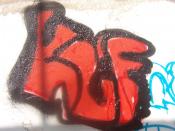The aftermath of the Civil Rights Movement dropped a seed on American soil in the mid-1970's that grew rapidly into an enormous beanstalk in the backyard of the ghettos. As it began sprouting, hip-hop appeared beautiful and full of remedy for the poverty African-American communities endured. The Black Power and Black Arts Movements were in full swing and a promising rhythm was pounding in the urban landscape of New York. What was this "hip-hop" though? It was an attitude, a way of life, a style of thinking, walking, talking, and dressing. Beyond music, it was a culture encompassing four main elements: Dejaying or Turntablism, Emceeing, Breakdancing, and Graffiti. Its main purpose was to unify people through lyrics that reflected real life issues the rest of the community could relate to. In addition to that, it was used as a political tool to raise awareness about the living conditions in the ghettos.
Social power was also a significant aspect of hip-hop and winning a freestyle battle was simultaneously followed by confidence, which was key to survival in the ghetto but today, one wrong word could mean someone's life. The 90's introduced to the world hip-hop's evil twin, a similar yet distinct class of hip-hop called rap. Rap music destroyed the original concept of unifying people and raising awareness about the ghettos and only amplified the social power aspect of the formula. It seems as if we are caught in the middle of a cannibalistic melee where almost every rapper is only concerned with making profit by any means necessary as rap ravages through the sky with jagged thorns and a repulsive aroma of corporate greed. Most people find this new image appealing and true hip-hop has already been brainwashed out of their minds. So does this mean true hip-hop is...


